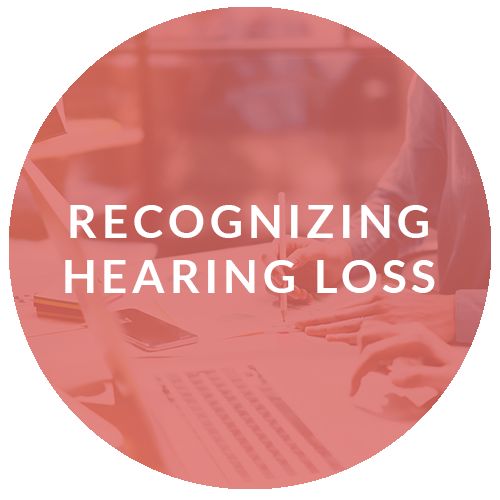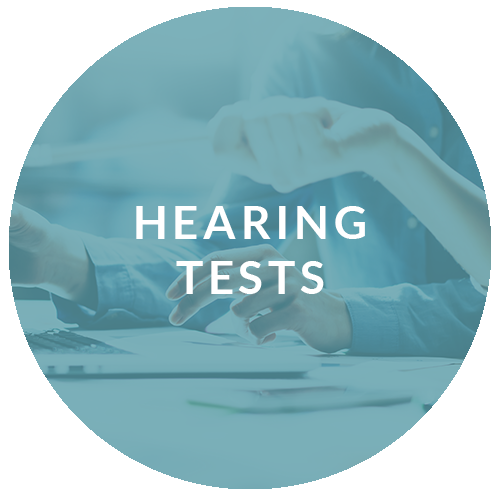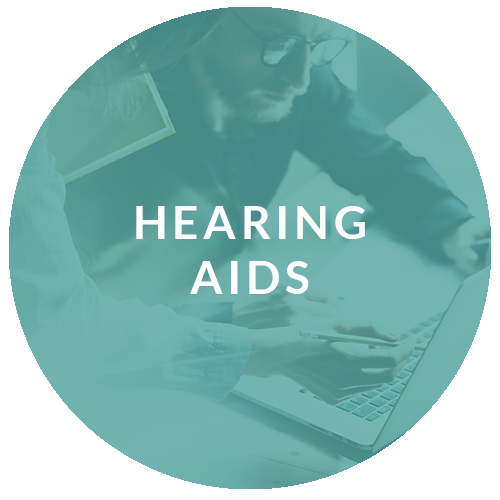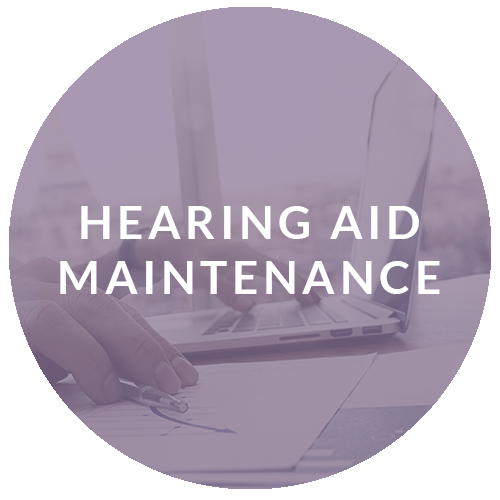Introduction
In searching for solutions to treat your hearing loss, you have already taken the first step to better hearing. As you embark on this journey, it’s important to say that the road is not always an easy one. Though the result of searching for hearing solutions has a happy ending, the path there can be daunting and confusing. Hearing aids seem expensive, and finding the perfect one appears time consuming and difficult. Without the right guidance, some find the journey so challenging that they may never take the first step.
It is important to remember that you are not alone in this process. If you are an important friend or family member in the life of a hearing impaired person, you can be that guide. Hearing loss has the potential to be an isolating experience. For people who have been living with hearing loss, finding the right solution is life-changing. You can help lead your loved one toward a future with better hearing, and conquer the challenges of the journey together. You want to provide information and support along the way – but you need help, too.
Feeling empowered to help your loved one find solutions for better hearing is all about having the right information, and that is what this guide is intended to do.
With straight-forward, no-nonsense information on every step during the hearing journey, we hope that this guide helps you connect with and help your loved one. We break down the importance of speech discrimination, hearing aid technology and even tips for having conversations with your loved ones – all in an effort to help you be the best hearing advocate your loved one could ask for. We’re excited to help you embark on the important and beneficial journey of helping your loved one re-connect with the world through better hearing.
Treating hearing loss early is one of the most important steps towards improving your life, or that of your loved one. But how can you help guide your loved one on the journey of identifying, recognizing and treating hearing loss? How can you help your friend or relative improve their lives through better, richer hearing?
This guide takes you through the journey toward better hearing, step by step. From recognizing the early signs of hearing loss to those very first conversations about hearing loss to the exciting first fitting of a hearing aid, this comprehensive guide breaks down each step. You will learn how each and every step is important, and how to set off on the journey feeling prepared and empowered. Your loved one’s journey toward better hearing starts with you, and we’re here to help you make the most of it.
Looking for a Hearing Healthcare Professional?
Hearing Loss
Recognizing the Signs: 5 Signs Your Loved One May Be Experiencing Hearing Loss
Hearing loss is a dynamic and complex health issue that may occur for a number of reasons, from genetics to aging to damage from repeated exposure to loud sound. As complex as hearing loss can be, it’s also a common problem. In the United States, approximately 48 million people experience hearing loss. Hearing loss may occur to anyone, at any age, but it occurs more frequently in older Americans. An estimated 30% of adults over the age of 65 experience some form of hearing loss. That increases to almost half of adults over 75.
But as common as hearing loss is for older Americans, many that are experiencing hearing loss don’t know it immediately. Most go an average of seven years before seeking treatment. The reason is simple: hearing loss often happens gradually – and the first to notice changes sometimes aren’t even the people who experience the hearing loss themselves. More often than not, it’s friends and family of someone with hearing loss that notices the signs first.
Without the right information, it can be difficult to identify the signs of hearing loss. Most of the signs are subtle – from slowly rising volume settings on the TV to avoiding conversations in loud environments. If you think your loved one might be experiencing changes in their hearing, pay attention to these five tell-tale signs of hearing loss.
1. Difficulty Hearing on the Phone
Having a conversation on the phone is more challenging for many people than speaking with someone face-to-face – but it’s also one of the most common signs of gradual hearing loss. If your loved one frequently asks you to repeat yourself in a phone conversation, or misunderstands you, it may be hearing loss.
But as common as hearing loss is for older Americans, many that are experiencing hearing loss don’t know it immediately. Most go an average of seven years before seeking treatment. The reason is simple: hearing loss often happens gradually – and the first to notice changes sometimes aren’t even the people who experience the hearing loss themselves. More often than not, it’s friends and family of someone with hearing loss that notices the signs first.
Without the right information, it can be difficult to identify the signs of hearing loss. Most of the signs are subtle – from slowly rising volume settings on the TV to avoiding conversations in loud environments. If you think your loved one might be experiencing changes in their hearing, pay attention to these five tell-tale signs of hearing loss.
2. TV and radio volume set to max
Just like telephone calls, TVs and radios are easily adjusted for volume, and are a great way to determine if your loved one is experiencing changes in their hearing. If you’ve noticed a TV set to maximum volume, or a car radio blasting at an unreasonable level, this is a good sign that they are no longer hearing sounds the way they used to. Remember – hearing loss is often gradual, so they might have slowly increased the volume without realizing what it could mean.
3. They often avoid social situations
With hearing loss, it becomes increasingly difficult for people to understand speech against background noise. Speech requires a listener to perceive a greater range of frequencies to understand what is being said. As such, people with hearing loss tend to have more difficulty with high-frequency voices, such as that of women and children. While a listener might not notice that they can no longer hear the higher frequencies in music, it will be easier to pick up on when those frequencies important to understanding a word or sentence are absent.
As a result, people with hearing loss may find themselves having to concentrate much harder on someone speaking – which can be downright exhausting in social situations. Social situations, usually with multiple speakers, simultaneous conversations, and background noise, tend to be challenging for people who experience hearing loss. This may cause someone to withdraw entirely from social situations, and willingly isolating themselves from interactions that might leave them tired or frustrated. If you notice your loved one avoiding family get-togethers or gatherings that they would otherwise enjoy, this could be a sign of hearing loss.
4. Mixing up similar words when listening to speech
Though we might not notice it, speech is a very complex combination of sounds and frequencies that requires a wide range of sound to be understood. Depending on the situation, you may mishear sounds that are similar, such as “p” or “b”, or “t” or “d.” Listeners must rely on small differences in frequency to distinguish between them. Many similar sounds require that a speaker move their lips in similar ways – and if a listener is relying partly on lip-reading to distinguish words, it’s easy to mix them up.
Pay attention to how your loved one hears certain words – do they often confuse words with similar sounds, or words that look the same when spoken? This can be a sign that your loved one is having difficulty perceiving a certain frequency needed to hear a word – an important element of hearing loss.
5. Difficulty understanding children and women talking
When someone experiences hearing loss, the first symptom is often difficulty with high frequency sound perception. While lower-frequency sounds like a bass drum or a deep voice are easier to understand for hearing loss sufferers, perception of higher sounds is commonly affected sooner than lower frequencies. These higher frequency sounds are most common in the voices of children and women. If your loved one has little problem understanding a man speaking – but strains to understand a child or female voice – this is a sign that the range of sounds they can hear is narrowing.
Talking to your loved one about hearing loss
Coming to terms with hearing loss can be challenging for family members, but even more challenging for those that experience it themselves. Talking to your loved one about their possible hearing loss requires both sensitivity and healthy channels of communication. Before sitting down to talk with your loved one, it is important to come prepared with examples from your experience with them, research on hearing loss, and suggestions on next steps. Set aside a time and place that is quiet and will not be challenging – your living room, for example, rather than a crowded restaurant. Keep in mind that your goal is to encourage them to take a hearing test. Engaging your family member or friend in a conversation about their hearing loss means you will need to give examples, ask questions and be ready to listen.
Rather than simply telling a loved one about the signs of hearing loss you’ve noticed, try asking them if they’ve noticed these changes, too. Ask them about certain environments in their daily life which may prove difficult to their hearing. The right questions allow your loved one to recognize the signs for themselves – which can make the prospect of going to a hearing specialist more empowering and less daunting. Plus, a hearing specialist will need the right information to make an accurate diagnosis, so this conversation will also help prepare your loved one for their hearing test.
The next steps
Once your friend or relative identifies the signs of hearing loss with your help, the next step is scheduling a hearing test. These are simple and straight-forward procedures to help identify and understand a person’s unique hearing challenges, and are the first step toward finding a solution. While there are lots of hearing tests online, it is essential to visit a hearing specialist for an accurate picture of their hearing abilities. Comprehensive hearing tests are conducted in soundproof rooms by hearing specialists. These series of tests will identify the configuration and degree of hearing loss, and will also ensure that your loved one will receive the best solution for their specific hearing needs. Scheduling an appointment with us is the best way to get off on the right foot.

The Hearing Test
What Happens During a Hearing Test?
Unlike lots of medical procedures, however, hearing tests are non-invasive and comfortable procedures. They are designed to help a hearing specialist more precisely identify what kinds of hearing loss someone is experiencing, and that requires plenty of communication, data-gathering and controlled testing.
Though every person suffering from hearing loss is different, hearing tests are standardized procedures that will follow a similar configuration.
Step One: Meet and Greet
Step Two: Identifying Unique Hearing Difficulties
Step Three: The Audiogram
The audiogram is coupled with a piece of equipment called an audiometer. During this portion of the hearing test, you will be asked to sit in a soundproof room. Your hearing specialist will provide you with headphones, through which you will hear a series of tones in varying pitch and intensity, produced by the audiometer. As you listen through these headphones, you will be asked to push a button when you hear a sound. Your responses are recorded as data on an audiogram. Afterwards, a hearing specialist has a visual representation of the frequencies and volume levels are most difficult for a patient, as well as the configuration of the hearing loss. This is crucial information they’ll need to move to the next step: finding the solution.
Preparing for a Hearing Test:
4 Questions From Your Hearing Specialist
1. “When did you first notice your hearing loss?”
Because hearing is a unique and personal experience, your hearing specialist needs to understand a person’s history to get to the bottom of what caused their hearing loss. Your loved one might have a hard time remembering when they first began noticing changes in their hearing, because the signs are subtle and hearing loss happens gradually. Talk with your friend or relative before the test. You may have information about your experience with them that may fill in the gaps. Consider writing down what you discuss. That way, they can have a detailed record to share with their hearing specialist during their appointment.
3. “Has anyone else in your family experienced hearing loss?”
Lots of people experience hearing loss because of genetics, in addition to the natural process of aging. These hereditary factors can sometimes point to less common reasons for hearing loss, and are important for a hearing specialist to know. Work through the family tree with your friend or relative to identify possible hearing loss in their relatives.
2. “What kinds of sound environments are most difficult for you?”
In the same way someone can be near- or far-sighted, someone can also experience many different configurations of hearing loss. Even with an audiogram, a hearing specialist relies on anecdotal information when deciding on next steps, too. If you have time, work with your friend or relative before the hearing exam by “testing” different sound environments. Ask them questions about their hearing in different places – in loud restaurants, at home watching TV, speaking on the phone – and write down what you find out. These details will help a hearing specialist paint a clearer picture of their specific kind of hearing difficulties.
4. “How are you feeling?”
Hearing loss is a medical condition, and most medical conditions can be affected by other health factors. If the person experiencing hearing loss is currently being treated for other medical conditions or is using medication, take note for your hearing specialist. Overall health will be a talking point during a hearing exam, so come prepared with information about other medical issues either past or present that might be affecting hearing.
See a hearing specialist
Types of hearing loss
Sensorineural Hearing Loss
Conductive Hearing Loss
Mixed Hearing Loss
Central Auditory Processing Disorders
Hearing Aids
Styles and Technologies
Getting Started with Hearing Aid Technologies
Hearing aids are currently in a Golden Age of innovation, with incredibly fast processing platforms and wireless connectivity. With so many styles and features to available, it may seem like a large task at hand to choose the right one. The first step toward understanding hearing aids is becoming familiar with the basic technology that goes into a hearing aid. Depending on the hearing aid, some functions are more or less advanced – but with the right combination of functionality, there’s a hearing aid for nearly every type of hearing loss and lifestyle.
Channels and Bands
Bandwidth
Programs
Ear-to-Ear Communication
Rechargeable batteries
Directionality
Wireless Connectivity
Remote Control
Speech Recognition
Find a Hearing Care Provider
Feedback suppression
Automatic Noise Reduction
Automatic Compression
Wax Guard or Trap
Vents
Water Resistance
How much will it cost?
Better hearing is an investment – but finding the right solution to hearing loss doesn’t mean taking out a second mortgage. While hearing aids can be very advanced – and have a price tag to match – but you can find a reliable hearing aid with the right technology at the right price. We are committed to providing the very best technology within an affordable price range, so that your loved one can find the help they need within their budget. Don’t be afraid to talk about your friend or relative’s budget with a hearing specialist at an appointment – we will work with you to find a hearing aid with the technology they need, within a price range they can afford. For more information on hearing aid prices, you can reference the Hearing Aids pricing survey. It is full of information about hearing aid pricing, value, and reliability.
Choosing the right hearing aid technology
Our hearing specialists are experts in both hearing aid technology, and how specific technologies make a big difference. Before a hearing appointment, ask your loved one to think about their lifestyle and needs – and work with the hearing specialist to identify which hearing aids have the right combination of functionality. The first step is to identify what their priorities are in the fit of their hearing aid.
Active
User-friendly
Convenience
Getting used to new hearing aids
Every hearing aid wearer will go through a period of adjustment, which is likely to be both an exhilarating and challenging experience. Here’s what to expect in this important transitional phase.
“Booming” voice
High-pitched sounds are tinny
The process of adjustment
Making aid adjustments
While a lot of these adjustments happen in the first appointment with the new aids, settings sometimes must be adjusted a few times before they’re just right. Don’t be afraid to talk to your loved one about how their new hearing aids feel and sound – and after a period of adjustment, don’t hesitate to make another appointment to work with your hearing specialist for more adjustments.
Maintenance
Making it Last: Tips for Hearing Aid Maintenance
Make sure your loved one knows the steps for taking care of their aids, and what you can do to help. These are some of the most important things to keep an eye out for when taking care of hearing aids – and what should be on every aid wearer’s maintenance checklist.
Humidity and moisture
Pets and children
If your loved one has pets in their home, it’s important to keep aids well out of reach of dogs, cats or any other animal likely to chew on them. If your loved one’s aids come with a recharging station, this should be kept somewhere high and out of reach. Hearing aids look like a tasty treat for even the most well-behaved furry friend.
Makeup and hair products
Cleaning and maintenance
Hearing Check-ups (and why they’re important)
The very best way to ensure that your friend or relative is getting the very most out of their aids is to stay in touch with the professionals that helped them along the way. As your loved one’s lifestyle changes, or as their hearing changes, their aids will need expert adjustments that only a hearing professional can give. Hearing specialists recommend annual hearing checkups to ensure good hearing health. But just what happens at a hearing check-up – and why is it so important to head in for a regular appointment?
Settings adjustment
These regular appointments allow your hearing professional to talk with your friend or relative about their hearing experience, and the chance to make adjustments that are needed. Plus, your hearing specialist will test each aid to ensure that all settings are working properly, and recommend any adjustments or repairs they might need.
Cleaning
Aid fit
Upgrades
A New Life with Better Hearing
But like every element of our lives, your loved one’s hearing will continue to change and adapt, and hearing aid technology with it. That’s why your hearing healthcare provider should be an important part of your continuing hearing journey with your loved one. With the right guidance and support from your audiologist or hearing instrument specialist, your loved one can continue to hear the world in brilliant color.




